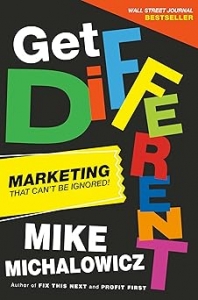First, Offer Readers the Right Questions
When it comes to interest rates, “investors are seeking the right answers to the wrong questions,” Boston-based MFS investment management portfolio manager and global investment strategist Robert Almeida suspects. When planning a long-term investment portfolio strategy, the precise timing of a Fed rate cut is not the issue. We should be asking what the fact that rate cuts are even being considered reveals about the fundamental health of our economy, Almeida asserts…
The most serious mistakes are not the result of wrong answers, the Corporate Learning Network editors agree.” The truly dangerous thing is asking the wrong questions.” Why is that so? “A wrong answer to the right question can, as a rule, be repaired and salvaged. But if you ask the wrong question and get the right answer, chances are it will take a lot longer to discover and inevitably lead to even more costly errors. As an example, the editors quote a comment by Steve Jobs on the birth of the automobile industry: “If Ford had asked people in a focus group what they wanted they would have said ‘faster horses’.” Translation – your marketing content cannot focus on satisfying a need for your client’s product or service without prospects first recognizing that need! “You have to start with figuring out what problem you’re solving, instead of searching for the answer,” Nicolas Cole writes in Inc. Magazine. ” Great ideas are answers to the right questions.”
Duotech Services lists questions business owners should be asking possible vendors and suppliers, including:
- Does your company have experience with a business like ours and understand our needs?
- If there was a boost in productivity could your adjust to meet our increased needs? If we needed to slow down production, are you flexible enough to adjust to that reality?
(Notice that these questions are not centered around cost, but around ease of communication and adaptability.)
Blog posts, as we so often stress at Say It For You, are not advertisements or sales pieces (even if increasing sales is the ultimate goal of the business owner). Whatever “selling” goes on in effective content is indirect and comes out of business owners sharing their passion special expertise and insights in their field. When content marketing “works”, readers are moved to think, “I want to do business with them!”.
Before offering solutions or answers, offer readers the right questions!






Follow us online!